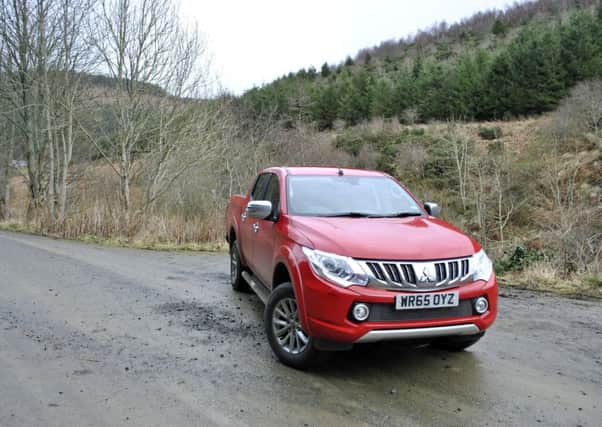Long-term update: Mitsubishi L200 Barbarian


At first glance there isn’t a huge amount to pick between them. As top-sepc examples with various optional extras they all cost in the region of £30,000 to £35,000.
They’re all also fully loaded with equipment. Leather upholstery, heated seats, keyless entry and start, a touchscreen multimedia system with sat nav, reversing cameras and electric windows are standard on the equivalent models from each manufacturer.
Advertisement
Hide AdAdvertisement
Hide AdThere are little differences: the Nissan lacks automatic wipers, for example, and the Mitsubishi’s media system lags behind the others’ but overall you’re not going to feel short-changed in any of them.
Inside, the Mitsubishi offers better rear legroom than either of its rivals although the front seats are narrower than in the others (a personal bugbear).
On the drivetrain front there’s little to choose between them. The Mitusubishi’s 178bhp is a touch down on the Navara’s 187bhp but doesn’t feel it and our Ranger came in 3.2-litre 197bhp guise, which didn’t feel any more powerful than the others.
On the road, the Ford is the noisiest of the three, with the the Nissan proving the most refined and quietest. The L200 slots in between the two, rougher than the Navara under acceleration but settling down unobtrusively at cruise.
The Nissan outshines the other two in ride as well, thanks to its clever multi-link rear suspension in place of the other two’s leaf spring setup. But its beefy steering is more of a strain than either than the SUV-like L200 or the Ranger, which enjoys a great speed-sensitive setup that makes parking a doddle.
Economy-wise there’s barely a fag paper between the L200 and Nissan, both returning 42mpg and emitting around 170g/km of CO2. The Ford’s 3.2-litre falls far short, with mid-30s economy but opt for the cheaper 2.2 and, once again, there’s virtually nothing in it.
In practical terms, the L200 can’t quite match the others for load bed size or towing capacity. However, most users are unlikely to notice the differences, especially athe L200’s lower kerb weight means it can carry more while towing.
Off-road you’ll find low-range 4x4 on all three and they trade the honours in terms of clearance, approach and departure angles.
Advertisement
Hide AdAdvertisement
Hide AdAlthough it’s unlikely many users will test them close enough to their limits for the differences to matter.
So, at the end of the day it really comes down to little personal preferences. They all cost roughly the same, offer similar economy and emissions, are all generously equipped and capable of as much off-road action as most owners will demand.
Frankly, if you could stick the Ford’s Sync2 media system and the Nissan’s trick suspension into the L200 I’d be a very happy camper.